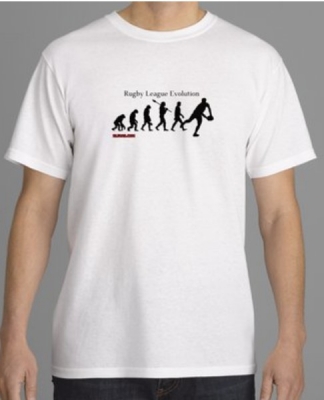jaybs wrote:I wonder if it was decided who the 12th Club would be, even before clubs were asked to apply, if your club met the qualifications? No shock that the remaining 11 clubs want to look after their own interests when the financial share out comes? some clubs crying poverty must have been getting some payment from Sky the number of matches at some clubs.
What frustrates me is how silent Our Club tends to be when it comes to the media, most Championship and 1st Division clubs tend to come up with some news for 'League Express' each week, except London? we must have a media person at the club?
Also in September there was a Fanfare for the announcement of The London Broncos Official Supporters Club, I joined the same evening, it as superb to read about the numbers joining, but it is now mid November and what has happened since, Nothing!
Apologies if this has already been shown on your forum,. This article by Mat Shaw, of the “League Express “ sums up how many fans feel about the application process for the 12th team. West
Rugby league has turned me into a cynic. Perhaps so much so that it has clouded my judgement and resulted in me becoming a serial over-thinker.
But I can’t help but think Bradford Bulls are on their way back to Super League.
It appears too obvious, reading the criteria published by Super League, that everything points in the direction of Bradford. In many ways, it’s too convenient for comfort too.
To apply for entry, one of the requirements is a top-six finish in the Championship during the last two seasons.
The top-six threshold, before you even consider who has finished where, is odd. The Championship operated a top-five play-off system last year and before that the top four entered the Qualifiers. A sixth-placed finished hasn’t achieved anything of note since 2014, when the Bulls were still in Super League.
However, the other five clubs in the running for Super League entry; Featherstone, Leigh, London, Toulouse and York, have all finished in the top fice during the past two years. Not the top six, the top five.
There is only one club that benefits from the top six criteria. That club is Bradford.
A coincidence? Perhaps. But that’s merely scratching the surface.
In the finance and sustainability section, one part of the criteria is that a club must not have an insolvency event to their name since January 1st 2018.
The Bulls’ liquidation was finalised in 2017.
Within the criteria, the largest part of the document is ‘Market Size and Commercial Appeal’. To an expansionist, commercial appeal would include the ability to expand to new areas, expose the competition to new markets and even secure new broadcast deals.
In this criteria, however, it’s based on social media figures, season ticket sales, attendances and merchandise revenue, all of which are understandable desires, of course.
Bradford have the most followers on Twitter and Facebook and they had the largest average attendance in the Championship last season other than, ironically, Toronto Wolfpack. There’s no questioning the Bulls come out on top when it comes to market size.
When it comes to potential growth? That’s up for debate. But it’s hard to see where potential is considered at all.
It has been stressed to the media that a great deal of the application criteria mirrors that of the much-revered licensing model last used in 2011. So the idea that criteria has been constructed to benefit any club would be off the mark.
There is one notable exception though. In 2011, clubs got a ‘tick’ if they weren’t within a 20-mile radius of any other club in Super League. London, York and Toulouse would have all ticked that box. That, however, is no longer a requirement.
Then Robert Elstone addressed the media and only added to the theory.
“One of the key criteria of evaluation will be fanbase,” he said.
“Both in terms of levels of engagement through social media, through the community but more importantly how clubs convert into a live audience, season ticket base and match tickets. Looking very carefully at what clubs will bring in those areas will be a big part of the evaluation.”
It’s a not-so-subtle endorsement for the Bulls.
Subsequently, he was asked about Toulouse Olympique, who bring a completely contrasting bid to the Bulls in terms of geographical location and potential benefits.
When asked if the threat of travel restrictions would work against Toulouse he said: “They probably should.”
Toulouse would have already been concerned about their chances if they’d read Super League’s ‘independent report’ into Toronto Wolfpack, which questioned the commercial benefits Super League had seen from the inclusion of Catalans.
When asked about just that, Elstone commented: “The evaluation would be similar to Toronto in that locally is it sustainable and successful, but more significantly is it a contributor to the economics of Super League and that would be around sponsors and broadcast revenues.”
Elstone would go on to say the competition had to do what was best for Sky and Betfred – Super League’s major sponsors, when it came to attracting subscribers and customers for their businesses.
You wonder whether Toulouse, or London for that matter, will even bother wasting their time.
Other strands of the criteria are questionable. Bradford have performed the weakest on the field of the six clubs in the last two years. Though promoted from League 1 in 2018, York City Knights went up as champions and all the other applicants finished above them in last year’s Championship.
Yet the Playing Performance section of the document is relatively short, with just four sub-sections. The first is a top-six finish, which Bradford have attained.
The second strand requires the CV of an applicant club’s head coach as well as other staff members. The career of the esteemed Bulls head coach John Kear stands out against his younger peers.
The third section is vaguer around plans for the 2021 squad if promoted, and the fourth is training facilities, with the Bulls operating at Tong High School which will pass all the requirements. Even where the Bulls have fallen short, they still look set to score well.
Super League are keen to give the impression that the selection process is transparent, so much so that they have published the criteria clubs will be judged on.
However, they aren’t so keen to provide clarity on the weighting of their criteria.
One line within the document reads: “The Panel will have absolute discretion in the weighting of the Assessment Criteria. For the avoidance of doubt, the Assessment Criteria do not carry equal weight.”
Elstone refused to answer when asked if he could shed light on the weighting. Instead, he said the question should be asked of the panel.
On Monday, I emailed the six panel members from the RFL and Super League asking if they could provide more clarity. Super League have declined to comment on their behalf.
The RFL replied by simply stating: “As per the published document, the Panel will have discretion in the weighting of the Assessment Criteria – which do not carry equal weight.”
Super League’s three representatives on the panel are Chris Anderson, Graham Odlin and Rhodri Jones. The latter, by the way, was a marketing executive for the Bulls between 2004 and 2005.
The trio are all a part of Super League’s executive board. It’s interesting to note that Elstone felt the need to be part of that infamous ‘independent report’ on Toronto, but would rather put more dispensable executives in for this job.
As part of Elstone’s team, they are all involved in drawing up the criteria. Super League were contacted to comment on that too. They declined. So much for transparency.
Thankfully, the RFL did confirm that all the panel members, from both the RFL and Super League, had been involved in the making of the criteria.
“The Application Process and Criteria document, and criteria therein, were drawn up jointly between SLE and the RFL, with approval from the Independent Chair, Lord Caine – building on experience from the licensing process that has previously determined Super League membership, whilst also allowing for the use information already provided to the RFL through the Return on Investment process that has been introduced for Championship and League 1 clubs in recent years.”
The governing body’s involvement in the selection process is hardly innocent either, given they are the leaseholders of Odsal Stadium.
Bradford left their spiritual home at the end of the last year and the consequence of that has resulted in a loss to the tune of £200,000 for the RFL.
The Bulls are growing in hope that, whether they are playing in Super League or the Championship, they’ll be back at Odsal next season.
But it doesn’t take a genius to figure out that Bradford being in Super League and raking in substantially more central funding improves their chances of making a return to the ground more financially viable. They only left a year ago due to crippling costs.
Take into account the financial impact Covid-19 has had on the RFL itself, with the income streams of the Challenge Cup Final and a three-Test series between England and Australia lost due to the pandemic, now more than ever they need Odsal occupied.
Like Elstone, it’s clear that Ralph Rimmer will have a significant influence on the recommendations made by the RFL trio, regardless of if his name is mentioned. For balance, the RFL’s three panellists are Karen Moorhouse, Tony Sutton and Dave Rotherham, who had an almost 20-year association with the Broncos spanning back to 1986, when they were known as the Fulham Colts.
Returning to the subject of Elstone, with a picture being drawn in this writer’s mind, I asked him specifically about the prospect of Bradford going back to Super League.
“I want this process to be forward-looking, dealing with contributions in 2020 and to that extent, it should only be looking backwards to validate what that club could do moving forward.”
Read into that what you wish. The minds of many are already made up.
Of course, the major elephant in the room is the fact one of the club’s minority owners is none other than Nigel Wood, the former RFL chief executive.
The dynamic of that is hard to read. Super League clubs memorably split from the RFL due to their disillusion with the way Wood was running the game.
They felt they didn’t have enough influence on the way the sport was run and that too much protection was given to lower league clubs.
That said, the clubs have no influence in this vote (one wonders why Toronto weren’t given the same treatment, but that’s a story for another day), and given their long history for short-sighted, self-interest motivated decisions, there’s a good chance they’d vote Bradford in for the away fans they’ll bring and the beer and burgers they’d sell.
The Bulls are one of only four clubs to win Super League in its 25-year history. More recently they’ve endured a torrid decline largely down to woeful mismanagement that saw the club go into administration four times before eventually being liquidated. That saw them go from World Champions to League 1 in the space of 12 years.
Even last year was something of a circus off the pitch. The Bulls ended up in special measures, were blocked from signing players and contracted players tried to force moves away from the club after it emerged than pension payments had not been made.
Andrew Chalmers, the previous owner who had no issue blasting everything and everyone in rugby league while his own club crumbled, walked away and handed over the club to Wood and his family, who had been involved in the process of selecting Chalmers as the club’s new owner when the original club was liquidated. Are you managing to keep up? Well done if so.
The Bulls now appear far more stable with Mark Sawyer running the club day-to-day, and few would question that a strong Bradford Bulls is good for the game of rugby league.
But the outcry that would follow if Bradford were handpicked for a return to the top flight would be damning.
Don’t bet against it happening though















